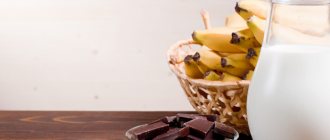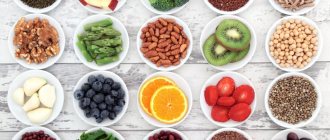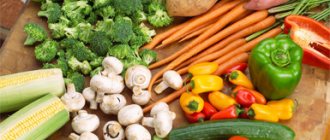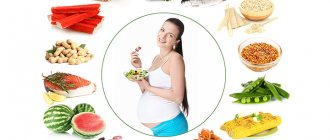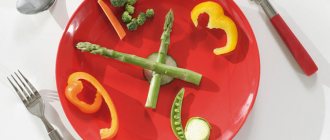In Russia, since the end of 2022, food prices have been rising and rising. Food products, according to Rosstat as of May 4, rose in price by 6.6% over the year. Officials are trying to regulate the cost of some individual goods and issue preferential loans to manufacturers. However, prices continue to rise. Fintalk spoke with blogger Sergei Yalunin, who recently conducted an extreme experiment: he limited the monthly food budget to only 1,000 rubles. What life hacks really helped you save on groceries?
Sergey Yalunin is a YouTube blogger, runs the channel “Serega Omnivorous”, lives in Volgograd.
How did the idea of eating for 1000 come about?
I started the experiment in mid-January 2022. The idea of living on a subsistence level has been discussed for a long time. Just remember the Minister of Labor of the Saratov Region, Natalya Sokolova, who, in a conversation with the regional Duma deputy from the Communist Party of the Russian Federation, Nikolai Bondarenko, said that 3,500 rubles per month “is quite enough for minimal physiological needs.” Bondarenko volunteered to live on this amount for the sake of the experiment, to which the minister replied that she could create a balanced menu for him. In response to the deputy’s remark that “we have winter for six months in the country,” the minister replied that “this is not a problem, pasta always costs the same.”
I decided to go even further and try to survive on 1,000 rubles. But all this is not due to the best conditions around. YouTube is just a reflection of what is happening in society. If people are now interested in surviving on 1,000 rubles, it’s for a reason.
Inflation expectations: why prices are rising in Russia
Use products to the last drop or piece
Not everything that seems unsuitable for further use is actually so. For example:
- An inconvenient sausage tail, which can no longer be cut into sandwiches, is perfect for pizza or solyanka. You can also chop it and add it to an omelet.
- A small piece of cheese can be easily frozen and grated. This topping is also useful for pizza. Or omelet, pasta.
- Sour milk is an excellent base for pancakes or homemade cottage cheese.
- If you add a tablespoon of apple cider vinegar and your favorite spices to a jar where the mayonnaise remains only on the walls and shake well, you will get an interesting salad dressing.
- You can do the same with leftover chocolate paste. Pour hot milk into the jar and you will have a full portion of cocoa.
What did the diet consist of?
With such a budget, you have to refuse any ready-made food - dumplings, doshiraki. I couldn't even afford pasta and bread. Spices are also too expensive. Any even minimally processed product requires an additional markup from the manufacturer.
Basically, my diet consisted of cereals: pearl barley, oatmeal, rice, millet. Cereals are cheap and nutritious because they soften during the cooking process.
The main difficulty of surviving on 1,000 rubles is not even getting used to meager food, but the constant lack of time: searching for cheap products and cooking took almost the entire day. Therefore, I tried to use the simplest recipes and prepare them so that there would be enough food for several days.
Almost all of my breakfasts during survival are oatmeal with water. Corn grits make delicious tortillas. Many people think that potatoes are a cheap food, but this is not true. Therefore, fried potatoes were a delicacy during the experiment.
Scarce freebies: what is government price regulation
Diet principles
PP cannot be called a diet. This is rather a small adjustment to your usual diet. Many, having read the requirements for this method, do not believe in its effectiveness. This is because we are used to denying ourselves many things in order to lose weight. The word “diet” is associated exclusively with deprivation and malnutrition. But nature still takes its toll, after being on a strict diet, sooner or later a person returns to fatty foods, flour, etc. This is because we simply need to be full, this is a normal physiological need.
Content:
- Diet principles
- Diet for a healthy person
- Menu for PP
- Additional tips from healthy people
Hunger for proper nutrition is absolutely unacceptable. In addition to fasting days, it is even useful if you use them occasionally. Unloading sets the entire body up to burn and use fat reserves. In addition, this method has a beneficial effect on the entire digestive system and metabolism. To “unload” yourself, you can choose one of the one-day mono-diets on: kefir, cucumbers, fruits, etc. You can do this no more than once a week, so as not to harm your health. Fasting days are not a requirement for PP, this is only an individual desire.
On other days, meals should be completely balanced. The body needs all the known elements; this is the only way the body will look beautiful and health will become stronger. Many methods include a no-fat rule. These are very outdated techniques or simply illiterate. At the end of the last century, nutritionists found out that people gain weight due to carbohydrates (mostly). And fats are extremely necessary, both animal and vegetable.
Sometimes it is suggested to replace animal fat with vegetable fat. This is impossible to do even if you completely give up meat and eat only nuts. By their structure, these are different components and they have no interchangeability. Therefore, PP contains both the first and second fats. Carbohydrates lead to excess weight if eaten incorrectly. Therefore, they are also present in the PP technique, but in a competent execution.
The main goal of the diet is not to lose weight, but to normalize the functioning of the whole body. A healthy body can independently adjust its weight. If the adjustment is still not satisfactory, add a little sport and get the ideal body. Methods to achieve this are proper metabolism and natural fat burning. To achieve this, you need to consume all components in the correct order and quantity: proteins, fats, carbohydrates.
How to save on food
View this post on Instagram
Publication from SEREGA OMNIVORE (@cepera_3pyku)
You need to look for something as cheap as possible, for example, with discounts or free. A working life hack is to buy weighted products in supermarkets separately, weighing each on a scale. Pennies are rounded towards the buyer. That is, we will get potatoes for 1 ruble 90 kopecks for 1 ruble.
You can and should look for free vegetables and fruits. There is a lot of food growing in villages or small towns. For example, we have apricots, mulberries, plums, apples, rowan berries, hawthorns, and nuts. Starting in April, you can eat dandelions and sorrel.
If the city is large , then the life hacks are different: you need to take advantage of all the advantages of large chain stores (promotions, free points). In large cities you can generally eat for free. In Moscow, tons of food are thrown into the trash every day! My friend and I picked up two bags: deli meats, Camembert cheese... I’ve never tried it, but I did it at a garbage dump in Moscow. Moreover, these discarded products still had a whole day before the expiration date. But they are removed from the shelf in advance, because the next day there should be a fresh product. But here in Volgograd we don’t have that; they even fight for overdue payments.
Top 10 poorest regions of Russia in 2021
Decisive battle near the cash register
31. Have you ever wondered why even in a half-empty store there are always queues of at least 2-3 people? It's simple: in front of the cash register there are shelves with various small items: candies, chocolates, napkins, chewing gum. While you are bored in line, your hands reach out for this bright little thing. Or your child will steal it from you (see point 6) Buy goods on the racks in front of the checkout only if they are on your list.
- Before checking out, take another look at what's in your cart. Remove from it what you did not intend to buy.
- Without leaving the cash register, check with your receipt to see if the seller has given you your purchases correctly. Is there any excess there? Are there any goods there that are not at the price indicated on the sales floor? A little trick to prevent such “mistakes” on the part of the seller: when greeting the seller, immediately ask him to punch the receipt for you. This will make him be more attentive, you never know, maybe you are from the tax office with an audit

- Pay in cash, not with a bank card. Spending virtual money is much easier than parting with real money.
Shopping and food in the first week
I found discarded produce at the market: a few tangerines, carrots, a few tomatoes. They were spoiled, slightly rotten, frozen, but they were edible.
I purchased products from Magnit, Svetofor, and Krasny i Beloy. What I bought in the first week:
- Sunflower oil - 77 rubles,
- Sugar - 44 rubles,
- Barley - 22 rubles,
- Peas - 25 rubles,
- Oatmeal - 13 rubles,
- Cabbage - 25 rubles,
- Potatoes, 7 pieces - 23 rubles,
- Chicken thigh, 1 piece - 36 rubles,
- Onions, 4 pieces - 10 rubles,
- Flour, 2 kg - 46 rubles,
- Eggs, a dozen - 57 rubles,
- Carrots, 1 piece - 2 rubles,
- Pork ham, 890 grams - 214 rubles
Total: 594 rubles.
I divided the purchased pork into 20 even pieces (about 45 grams each) and froze it so that the meat would last a long time.
In the first week I made pearl barley pancakes in water, they can also be used as bread. Made pea soup. For dessert I made carrot cookies: I mixed the remaining pickle juice from the cucumbers with vegetable oil, sugar, grated carrots, added a little soda and baked in the oven. I also didn’t have enough money for tea, so instead I used rosehip and hawthorn, collected on the street, brewed it with boiling water and drank it.
I spent the fifth day of the experiment visiting my mother and did not refuse food. For dinner I prepared stewed cabbage and pancakes stuffed with chicken, cabbage, onions and carrots.
On the sixth day I tried to get lunch at a distribution for the homeless. This was not the first time I was there: first you take a ticket, then you stand in line, you can’t get food twice. The soup had already run out when I arrived. I managed to get candy, marshmallows, hot tea, sauerkraut salad and three pieces of bread. I gave the sweets to a homeless man I knew and took the rest home.
At the end of the week I cooked some pork chops breaded with ground barley and potato pancakes. I also prepared sauerkraut.
What products do we overpay for?
Very often there are tips for thrifty housewives to do everything at home themselves. Buy a yogurt maker, make dumplings in huge quantities, and so on... Yes, these tips have a basis, indeed, homemade dumplings are of better quality and cheaper than store-bought ones, and they are much tastier. It’s just that it will take half a day off to put a lot of them on.
Article on the topic
Hastily. Learning to choose semi-finished products
Nevertheless, it is worth reconsidering your attitude towards semi-finished products. So, for example, store-bought cutlets at cost are much more expensive than homemade ones, sausages and sausages cost a lot of money, ordinary goulash can be bought much cheaper than a kilo of sausages, but goulash is meat, and not an incomprehensible fatty something. And so on.
Shopping and food in the second week
I picked up discarded cherry tomatoes at the market. I bought it at the supermarket:
- onion - 5 rubles,
- beets - 4 rubles,
- carrots - 5 rubles,
- oatmeal - 13 rubles,
- rice - 31 rubles,
- potatoes - 6 rubles,
- apple, 1 piece - 3 rubles.
Total: 67 rubles. Spending for two weeks: 661 rubles
I prepared borscht (beets, onions, carrots, pork), pea puree (peas, onions, carrots) and carrot cake (egg, sugar, carrots, flour, soda). One of the subscribers advised making cutlets from cabbage stalks with flour and egg. I have prepared dumplings stuffed with pork, potatoes and onions and noodles for the future.
An approximate meal in the second week consisted of traditional oatmeal for breakfast, potato pancakes with meat or cabbage cutlet, sauerkraut for lunch, carrot cake for dessert, borscht or barley soup or dumplings for dinner.
At the end of the week, I tried my luck again at distributing food for the homeless - this time in a different place. For lunch I received a decent soup with mushrooms, meatballs and pasta, a loaf of bread, cheesecake and tea.
Purchased for free at Carousel for 50 bonus points - the equivalent of 50 rubles. I took bread, curd cheese, oatmeal, carrots, potatoes, onions, 40 grams of grapes.
Hyperinflation, but everything is there: prices and wages in 1992
Menu for PP
With such a wide list of products, creating your own diet menu will not be difficult at all. As already mentioned, you only need to refuse “garbage” in products. Sometimes replacing fast food and street food can be difficult, for example during lunch breaks at work. In this case, you will have to train yourself to take food from home or simply look for an affordable cafe nearby. By the way, student canteens are excellent for these purposes: the food there is inexpensive and almost all low-calorie.
To get used to a new way of eating, it is better to create a menu for the week in advance. This way you can prepare recipes in advance, buy groceries, and allocate time for cooking.
Let's look at the daily diet in detail.
Monday
Morning: muesli with yogurt, dry or fresh fruit, green tea.
Snack: whole grapefruit, tea or natural juice.
Lunch: green borscht with rice, a little sour cream, a piece of rye bread.
Snack: a glass of plain yogurt.
Dinner: boiled turkey, baked zucchini with spices.
Tuesday
Morning: buckwheat porridge with milk, natural coffee.
Snack: kiwi, mineral water.
Lunch: creamy potato and broccoli soup.
Snack: dried fruits, tea with milk.
Dinner: steamed poultry cutlets, stewed eggplant with tomatoes.
Wednesday
Morning: two toasts from coarse bread, homemade jam or honey, coffee.
Snack: green apple.
Lunch: borscht with lean meat, sour cream.
Snack: a couple of cucumbers without salt.
Dinner: river fish, baked zucchini or zucchini.
Thursday
Morning: oatmeal with pieces of peaches or berries according to the season.
Snack: large orange.
Lunch: mashed potatoes, rabbit meatballs.
Snack: tomatoes with a piece of cheese.
Dinner: stewed beef with onions, mixed lettuce.
Friday
Morning: coffee with milk and oatmeal cookies.
Snack: fruit salad with yogurt.
Lunch: rassolnik without meat, a piece of rye bread.
Snack: vegetable salad.
Dinner: chicken in the oven, fresh cucumbers.
Saturday
Morning: corn porridge with raisins, green tea.
Snack: a handful of nuts, natural citrus juice.
Lunch: boiled potatoes, a piece of young boiled lamb.
Snack: a serving of low-fat yogurt.
Dinner: steamed hake, vegetables stewed in tomato.
Sunday
Morning: kefir muesli, natural coffee.
Snack: green apples.
Lunch: lean cabbage soup, a slice of bread.
Snack: cucumber and tomato salad.
Dinner: rabbit stewed with vegetables.
Over time, all combinations of necessary ingredients will be remembered and creating a diet will become easier. At the beginning of the course, you need to decide exactly what your goals are. If you need to lose a large amount of excess weight, preference should be given to the lowest-calorie foods: cucumbers, any cabbage (especially sea cabbage), lettuce, greens, citrus fruits. But even in this case, you cannot completely give up meat, nuts, and milk.
You can eat exclusively plant foods for no longer than two weeks. Then gradually switch to a balanced diet. The body, having all the necessary elements, will begin to burn fat, rebuild itself and lose excess weight. Of course, there is nothing to talk about significant weight loss without exercise. The volumes will decrease, but the body can become completely healthy if you keep it in good shape.
Shopping and food in the third week
Purchases: onions, carrots, potatoes, cabbage, corn grits, two crab sticks. Spent 89 rubles. I got a free lemon at the market. I bought two persimmons for 20 rubles and a kilogram of discounted vegetables (onions, potatoes, carrots) for 12 rubles. Total spending for the third week: 121 rubles. During the entire experiment I spent 782 rubles.
I prepared pickle soup, noodle soup, a salad of crab sticks and rice, and pancakes from three types of cereals. The food still left from last week was carrot cake, borscht, sauerkraut, and dumplings.
In the middle of the week I felt bad, thought I was sick, and went to a friend’s house to drink tea with lemon, since I didn’t have money for lemon.
A subscriber said that at the regional branch of the LDPR you can get free tea, I came and they gave me two packs. It's a pity that I didn't know about this life hack earlier.
“Pyaterochka” VS “Perekrestok”: is it worth accumulating bonuses in supermarkets with Alfa-Bank cards
Examples of budget recipes
These dishes can be given even to small children.
Meatball soup
- 500 g minced lean meat with onions;
- 50 g rice;
- 1 carrot;
- 1 onion;
- celery stalk;
- half a bell pepper;
- 2-3 potatoes;
- 3 liters of water;
- greenery.
How to cook:
- While the water is heating, peel the vegetables and rinse the rice until the water runs clear.
- Cut the potatoes into strips.
- Finely chop the pepper, onion, and celery.
- When the water boils, add vegetables and rice.
- While they are cooking, make meatballs - small balls of meat.
- Carefully place one at a time into the pan. Remove foam. Cook for 5 minutes after the meatballs float to the surface.
- Finely chop the greens and add to serving plates or to the pan.
Steamed fish sausages
- 600 g fish (salmon, hake, cod);
- 2 eggs;
- 1 onion;
- dill greens;
- ½ tsp. salt;
- a pinch of pepper.
How to cook:
- Make minced meat from boneless fish and onions.
- Add eggs and finely chopped dill, salt and pepper.
- Cut rectangles approximately 30x35 cm from the baking sleeve. Place the minced meat, forming sausages. Secure the ends of the film with clips or tie.
- Place in a double boiler and cook for 20 minutes from the moment the water boils.
- Sausages are delicious both warm and cold.
Beet and apple salad
- 2-3 beets;
- 1 large sweet and sour apple;
- 2-3 pcs. prunes;
- A handful of walnuts.
How to cook:
- Bake the beets in foil at 200°C for 40 minutes. Cool, grate on a coarse grater.
- Peel and chop the apple.
- Soak prunes in boiling water until soft, chop.
- Chop the nuts.
- Mix everything in a bowl. The dressing for this salad can be lemon juice, sour cream or neutral yogurt without additives.
Shopping and food in the fourth week
I bought chicken liver, chicken thigh, and a package of discounted tangerines. At the end of the experiment - a set of fish soup, onions and persimmons. Total: 217 rubles per week. Total for the experiment: 999 rubles.
I made flatbreads with rice and eggs from the liver, made cabbage leaves in batter, fish soup with barley, potato pancakes, and meatballs from meat and rice. I ate this and leftovers from last week.
I had lunch for free once at my father’s (borscht, bread, two cutlets) and another time at the monastery (cabbage soup, bread, buckwheat with sausage, tea).
At the end of the experiment, I had 1 ruble, 300 grams of corn grits, and tea from the LDPR left.
